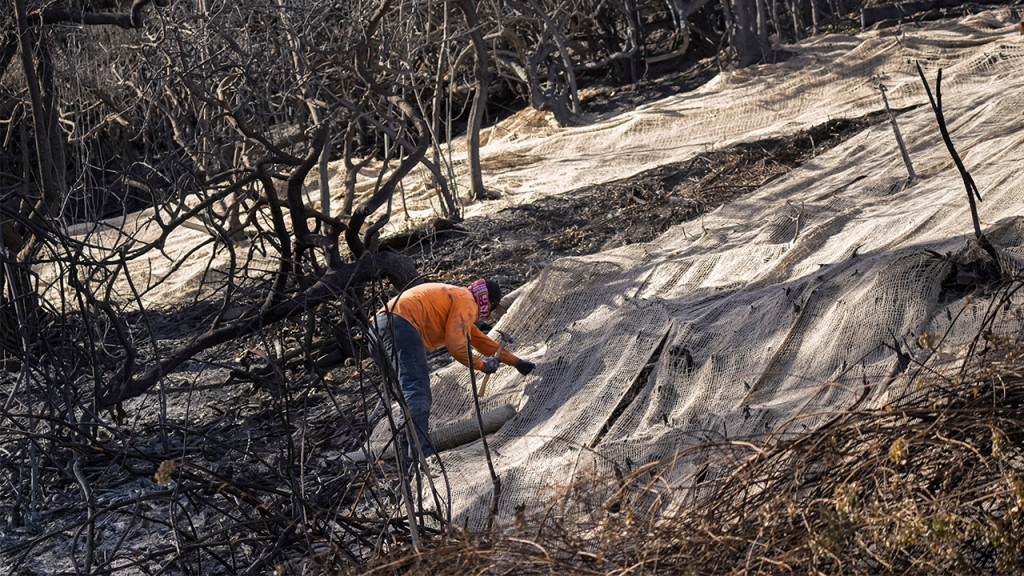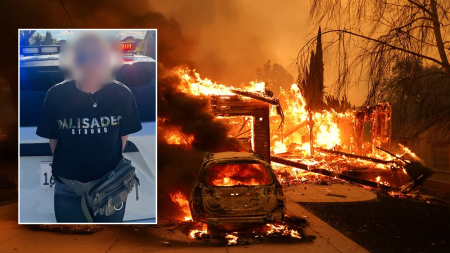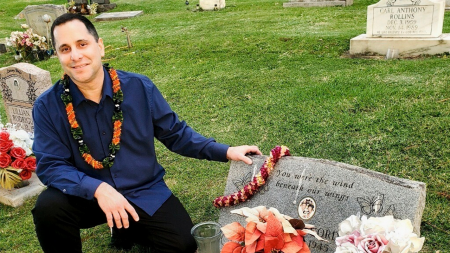The arrival of rain in Southern California after an extended period of dry, windy weather brought a mixed blessing to a region grappling with the aftermath of multiple wildfires. While the precipitation was welcomed for its potential to aid firefighting efforts, authorities expressed concerns about the possibility of heavy rainfall triggering mudslides and debris flows in recently burned areas, posing a new threat to residents and infrastructure. The Los Angeles County public works department had proactively spent the preceding week implementing preventative measures in fire-devastated areas, including clearing vegetation, stabilizing slopes, and bolstering roads. These efforts were aimed at mitigating the risk of landslides and erosion that could be exacerbated by the anticipated rainfall.
The National Weather Service predicted widespread rainfall across the region, with most areas expected to receive approximately an inch of precipitation over several days. However, forecasters warned of the potential for localized downpours, commonly known as cloudbursts, which could create conditions conducive to mud and debris flows, particularly in burn scars where vegetation has been removed, leaving the soil exposed and unstable. While the overall rainfall forecast was manageable, the localized nature of potential cloudbursts raised concerns about the possibility of intense rainfall concentrated over vulnerable areas.
The anticipation of potential debris flows sparked heightened concern among residents and officials, particularly given the tragic precedent of the 2018 Montecito mudslides. In that event, heavy rainfall following the Thomas Fire triggered devastating debris flows that claimed 23 lives and destroyed hundreds of homes. The memory of this disaster underscored the potential danger of post-fire debris flows and prompted a proactive approach to preparedness and mitigation. Los Angeles Mayor Karen Bass issued an executive order to expedite cleanup efforts and minimize environmental impacts from fire-related pollutants, while Los Angeles County supervisors approved emergency measures to implement flood control infrastructure and remove sediment in affected areas.
Adding to the complexity of the situation was the toxic composition of the ash remaining in the burn zones. This ash, a byproduct of the incinerated homes, vehicles, and other materials, contained a hazardous mix of chemicals, heavy metals, and other pollutants. Residents engaged in cleanup efforts were advised to wear protective gear to minimize exposure to these harmful substances. The presence of toxic ash amplified the potential health and environmental consequences of debris flows, as the ash could be carried downstream, contaminating waterways and posing a risk to human and animal health.
Despite the looming threat of rain-induced mudslides, the wet weather offered a respite from the persistent dry and windy conditions that had fueled the wildfires. Several fires continued to burn across the region, including the Palisades and Eaton Fires, which had collectively claimed at least 28 lives and destroyed over 14,000 structures. The arriving rainfall was expected to assist firefighters in their ongoing efforts to contain these blazes. The Hughes Fire in northern Los Angeles County, which had prompted widespread evacuations earlier in the week, saw significant progress in containment thanks to the efforts of firefighters and the change in weather.
The Border 2 Fire in San Diego County, however, remained largely uncontained as it burned through a remote area near the U.S.-Mexico border. The remote location of this fire presented challenges for firefighting efforts, and the rain’s impact on its containment remained uncertain. As Southern California navigated the complex interplay of wildfire recovery, rainfall, and the potential for debris flows, the region faced a continued period of uncertainty and the need for ongoing vigilance and preparedness. The rain, while a welcome ally in the fight against the fires, also presented a new set of challenges, requiring careful monitoring and proactive measures to protect lives and property.










